1) The cerebellum occupies two-thirds of the brain.
A ) False
B ) True
Ans A ) False
2.
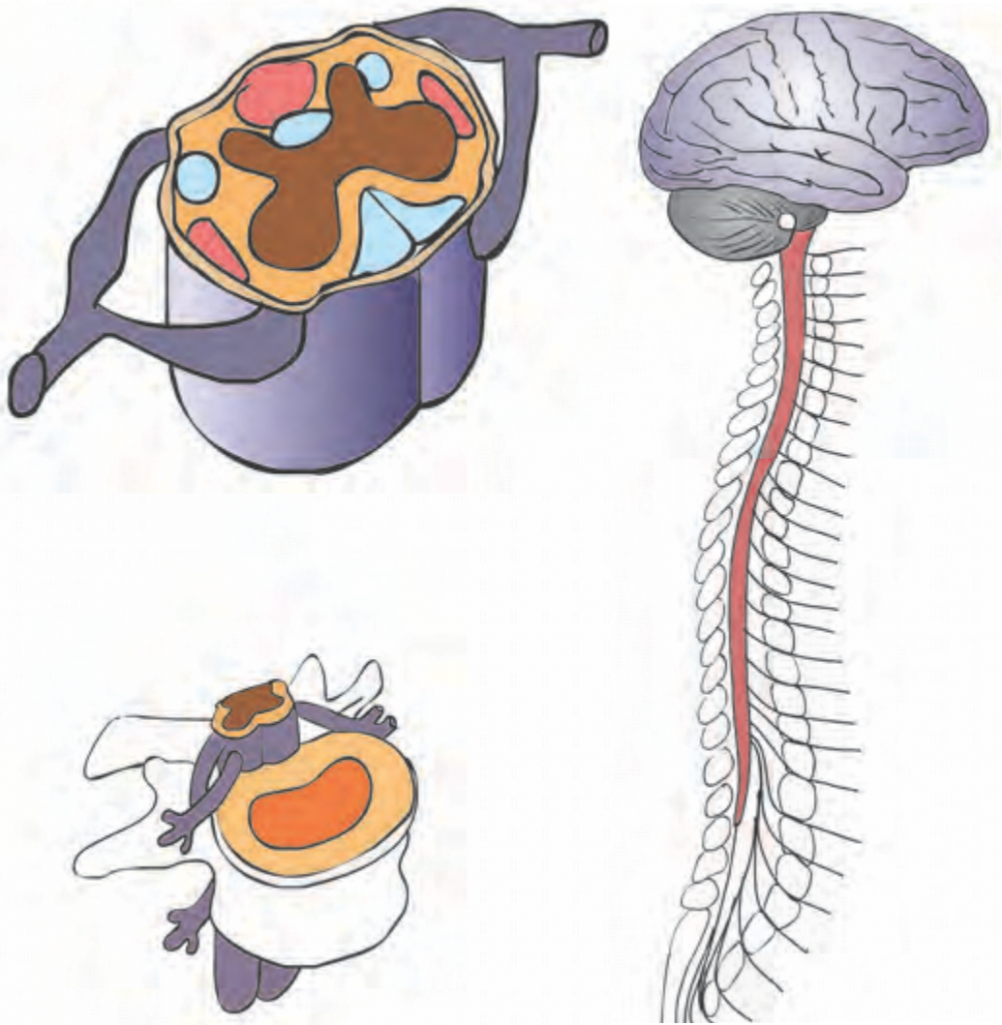 3.) The figure shows which of the following-
3.) The figure shows which of the following-
A ) Brain and spinal cord
B ) Medulla oblongata
C ) Cerebellum
D ) Cerebrum and cerebellum
Ans A ) Brain and spinal cord
4) inhaled by lungs is transported to every cell of the human body.
A ) Oxide
B ) Oxygen
C ) Carbon dioxide
D ) Nitrogen
Ans B ) Oxygen
5.
 6 ) The figure shows which of the following process?
6 ) The figure shows which of the following process?
A ) Stomata
B ) Transportation pull
C ) Evaporation
D ) Transpiration
Ans D ) Transpiration
7 ) Which two systems help each other to control and integrate the various activities of the body.
A ) Nervous and excretory B ) Excretory and chemical C ) Nervous and chemical D ) Nervous and circulatory
Ans C ) Nervous and chemical
8 ) is also called small brain.
A ) Spinal cord B ) Cerebellum C ) Cerebrum
D ) Medula oblongata
Ans B ) Cerebellum
9 ) Transpiration : Xylem :: Translocation : ?
A ) Phloem
B ) Transportation
C ) Conductor
D ) Stomata
Ans A ) Phloem
10) Which of the following systems consist of a well-organized network of nerves which can conduct information in the form of electrical impulses from one part of the body to other?
A ) Nervous system
B ) Excretory system C ) Circulatory system D ) Hormonal system
Ans A ) Nervous system
11) Pick the odd option out.
A ) Kidneys
B ) Pair of ureters
C ) Bladder
D ) Phloem
Ans D ) Phloem
12.
 13) The setup in the figure concludes which of the transportation method in plants?
13) The setup in the figure concludes which of the transportation method in plants?
A ) Transpiration pull
B ) Stem pressure
C ) Root pressure
D ) Root transfer system
Ans C ) Root pressure
14 ) conduct impulses from sensory organs to the brain and the spinal cord.
A ) Associate neurons
B ) Motor neurons
C ) Sensory neurons
D ) Peripheral neurons Ans C ) Sensory neurons
15 ) Pituitary is located
A ) Anterolateral sides of trachaea
B ) Behind thyroid gland
C ) Anterior end of each kidney
D ) At the base of brain
Ans D ) At the base of brain
16.) Human excretes in the form of
A ) Urine
B ) Uric acid C ) Ammonia D ) Ornithine
Ans A ) Urine
17 ) What type of tissues are Xylem and Phloem?
A ) Conducting tissues B ) Transport tissues C ) Stem tissues
D ) Nutrient tissues
Ans A ) Conducting tissues
18 ) Which of the organ does take part in the process of excretion?
A ) Adrenal gland B ) Renal pelvis C ) Medulla
D ) Ureter
Ans A ) Adrenal gland
19 ) Endocrine glands are also called glands.
A ) Phototrophic
B ) Ductfull C ) Ductless D ) Nervous
Ans C ) Ductless
20 ) A state of equilibrium maintained by proper coordination is called ‘. ’
A ) Co-ordinated equilibrium
B ) Repiration
C ) Thermal equilibrium
D ) Homeostasis
Ans D ) Homeostasis
21.) Sugars are produced in
A ) Flowers B ) Roots C ) Stem
D ) Leaves
Ans D ) Leaves
22) Which of the following opens only at night?
A ) Mimosa
B ) Polyanthus
C ) Balsam
D ) Lotus
Ans B ) Polyanthus
23) Cavities in brain : ventricles :: Cavity in spinal cord : ?
A ) Meninges
B ) Central canal
C ) Vertebral column
D ) Cranium
Ans B ) Central canal
24 ) The process of separating the nitrogenous waste from blood with the help of man made machine is called…………….
A ) Excretion B ) Urolysis C ) Analysis D ) Dialysis
Ans D ) Dialysis
25 ) Each nephron has a cup-like, thin-walled upper part called the ……………
A ) Glomerulus
B ) Bowman’s capsule
C ) Nephron
D ) Capillaries
Ans B ) Bowman’s capsule
26 ) The food produced in leaves is not necessarily transported to each cell in the plant body.
A ) False
B ) True
Ans A ) False
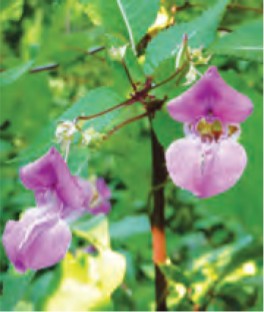 26 ) What is the characteristic feature of the plant in the figure?
26 ) What is the characteristic feature of the plant in the figure?
A ) The ripened fruit dehisces.
B ) Fibrils present on the leaves. C ) Flower opens only at night. D ) Touch sensitive.
Ans A ) The ripened fruit dehisces.
- 27) Waste separated is basically ……………
A ) Calcium waste
B ) Oxygenated waste C ) Carbonated waste D ) Nitrogenous waste
Ans D ) Nitrogenous waste
28 ) Gaseous substances are given out by ……………
A ) Translocation
B ) Absorption C ) Evaporation D ) Diffusion
Ans D ) Diffusion
29 ) is largest part of our brain.
A ) Spinal cord
B ) Cerebellum
C ) Cerebrum
D ) Medulla oblongata
Ans C ) Cerebrum
- 30 ) Cerebral hemispheres are joined with each other with the help of tough fibres and ……………
A ) Neurons
B ) Nerve tracts
C ) Meninges
D ) Cerebellum
Ans B ) Nerve tracts
- 30 ) Transportation by diffusion occurs from
A ) Low pressure to high B ) High pressure to low C ) Low pressure to low D ) High pressure to high
Ans B ) High pressure to low
- 32 ) are the structural and functional units of the nervous system.
A ) Dendrites B ) Neurons C ) Axons
D ) Synapse
Ans B ) Neurons
- 33 ) Pick the odd man out in terms of excretion.
A ) Kidneys
B ) Heart C ) Lungs D ) Skin
Ans B ) Heart
- 34 ) Convulations are present to ……………
A ) Increase the surface area of the cerebrum.
B ) Show change in thinking of a person.
C ) Develop different knowledge in each convolution.
D ) Protect the cerebrum from shock or any trauma.
Ans A ) Increase the surface area of the cerebrum.
- 35 ) As a response to changes in the surroundings, plant hormones bring about various movements in plants.
A ) True
B ) False
Ans A ) True
- 36 ) Which of the following is not controlled by the left side of the brain?
A ) Analytical thinking
B ) Logical thinking
C ) Language
D ) Holistic thinking
Ans D ) Holistic thinking
37 The figure shows the structure of an organ which is part of –
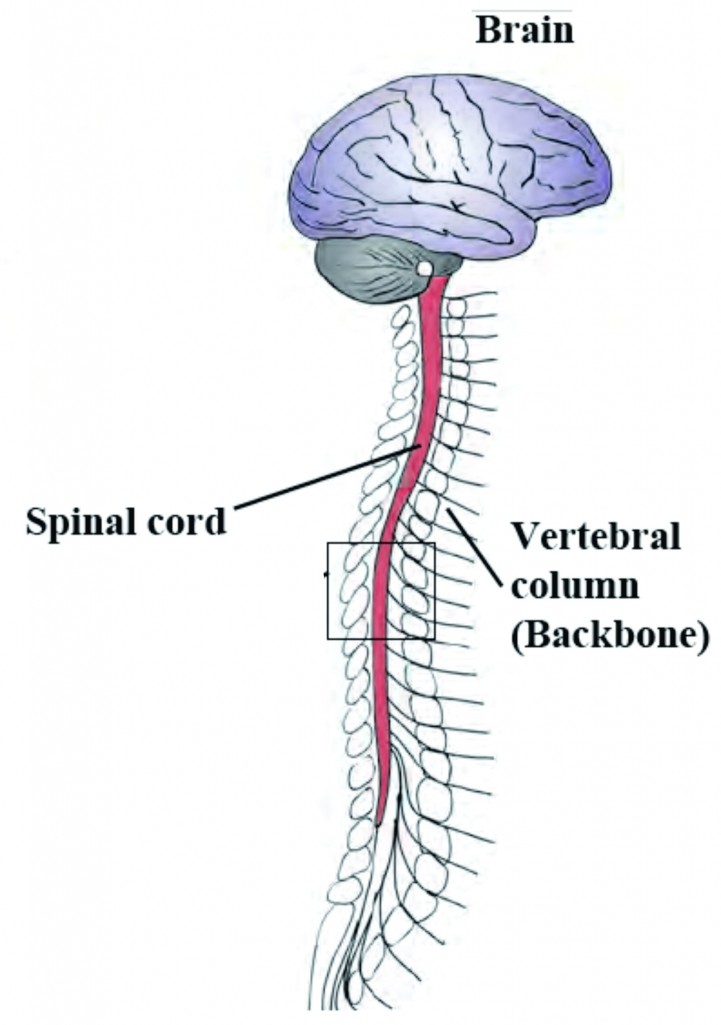 )
)
A ) Association nervous system B ) Peripheral nervous system C ) Autonomic nervous system D ) Central nervous system
Ans D ) Central nervous system
38 ) Control and co-ordination is brought about with the help of a special type of cells called …………….
A ) Neurons B ) Spinals C ) Cranium
D ) Nephrons
Ans A ) Neurons
39 ) How are all parts of the plant connected?
A ) By conducting tissues.
B ) By branches.
C ) By chrolophyll structures.
D ) By roots.
Ans A ) By conducting tissues.
40 ) Xylem : water :: Phloem : ?
A ) Water compounds
B ) Food
C ) Gases
D ) Nutrients
Ans B ) Food
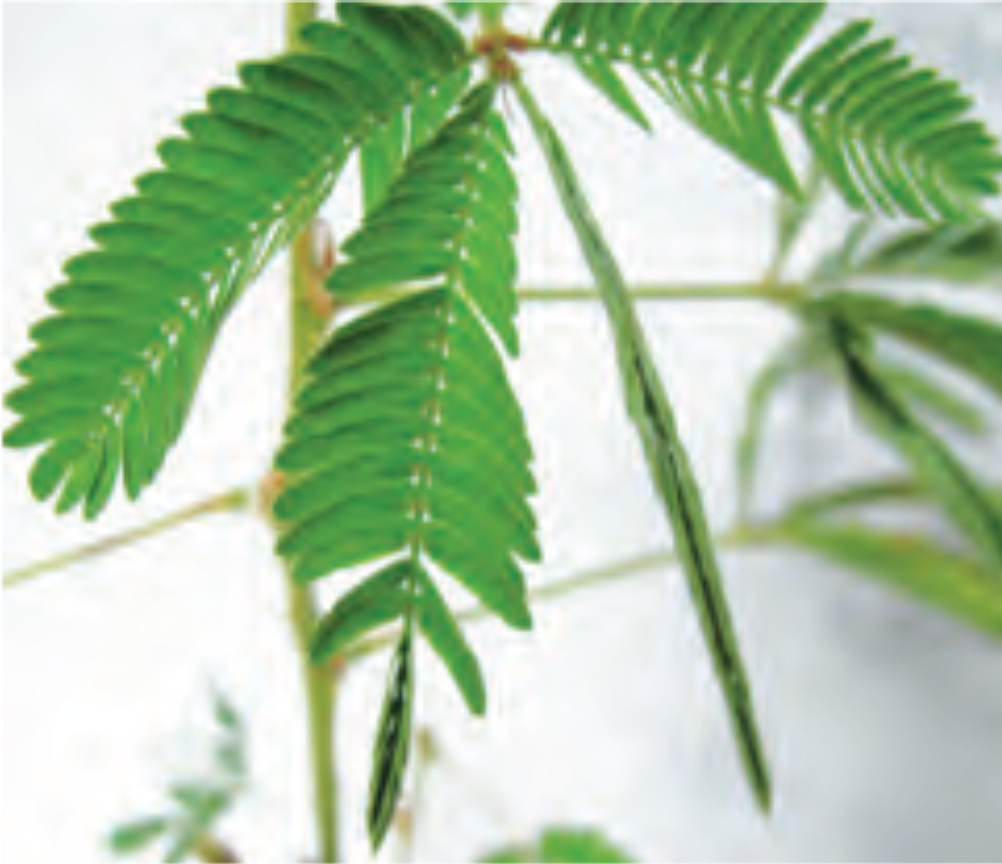 42 ) Which plant is shown in the figure?
42 ) Which plant is shown in the figure?
A ) Tuberose B ) Balsam C ) Mimosa
D ) Venus fly-trap
Ans C ) Mimosa
43 ) In unicellular organisms, ……………
A ) Waste materials are directly eliminated across the cell surface.
B ) Waste excretion is complex.
C ) Waste materials are indirectly eliminated across the cell surface.
D ) Waste materials are directly eliminated in cytoplasm.
Ans A ) Waste materials are directly eliminated across the cell surface.
44 ) The spinal cord is a part of the nervous system.
A ) Peripheral
B ) Autonomous
C ) Central
D ) Associatory
Ans C ) Central
45 ) Pick the odd option out regarding hormones.
A ) Tendrils
B ) Auxin
C ) Gibberellins
D ) Abscisic acid
Ans A ) Tendrils
46 ) Removal of waste or harmful substances from the body is called ……………
A ) Absorption
B ) Transpiration
C ) Excretion
D ) Translocation
Ans C ) Excretion
47 ) The left side of our brain controls the …………… side of our body and right side of our brain controls ……………
side of the body.
A ) Upper, lower
B ) Left, right
C ) Right, left
D ) Lower, upper
Ans C ) Right, left
48 ) Food can be carried in a plant only in one direction i.e. upwards.
A ) False
B ) True
Ans A ) False
49 ) Name the process through which water enters the cell.
A ) Translocation
B ) Absorption C ) Evaporation D ) Diffusion
Ans D ) Diffusion
50) 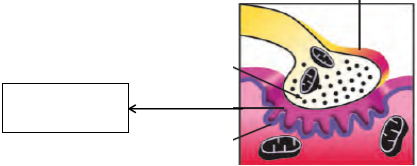 ) Label the part in the figure shown by an arrow?
) Label the part in the figure shown by an arrow?
A ) Synaptic cleft
B ) Synaptic vesicles
C ) Post-synaptic membrane
D ) Dendrites
Ans A ) Synaptic cleft
51.
 52 ) The following equipment is used for
52 ) The following equipment is used for
A ) Purification of blood B ) Oxygenation of blood C ) Urination of blood
D ) Detixification of lungs
Ans A ) Purification of blood
54 ) Opening of stomata is guarded by ……………
A ) Guard cells B ) Somato cells C ) Leaf cells
D ) Epidermal layer
Ans A ) Guard cells
55 ) Raphides are
A ) Crystals of calcium oxide
B ) Crystals of calcium carbonate
C ) Crystals of calcium oxalate
D ) Crystals of oxalate
Ans C ) Crystals of calcium oxalate
56 ) Roots : Root pressure :: Leaves : ?
A ) Stomata
B ) Transportation pull C ) Transpiration pull D ) Evaporation
Ans C ) Transpiration pull
57 ) The cells that support the nerve cells and help in their functioning are called …………….
A ) Grey matter B ) White matter C ) Neuroglia
D ) Axons
Ans C ) Neuroglia
58) Pick the odd option out.
A ) Central nervous system
B ) Peripheral nervous system C ) Association nervous system D ) Autonomic nervous system
Ans C ) Association nervous system
59 ) The large brain surface has deep, irregular ridges and grooves which are called ……………
A ) Convolutions
B ) Ups and downs C ) Highs and lows D ) Crests
Ans A ) Convolutions
60 )
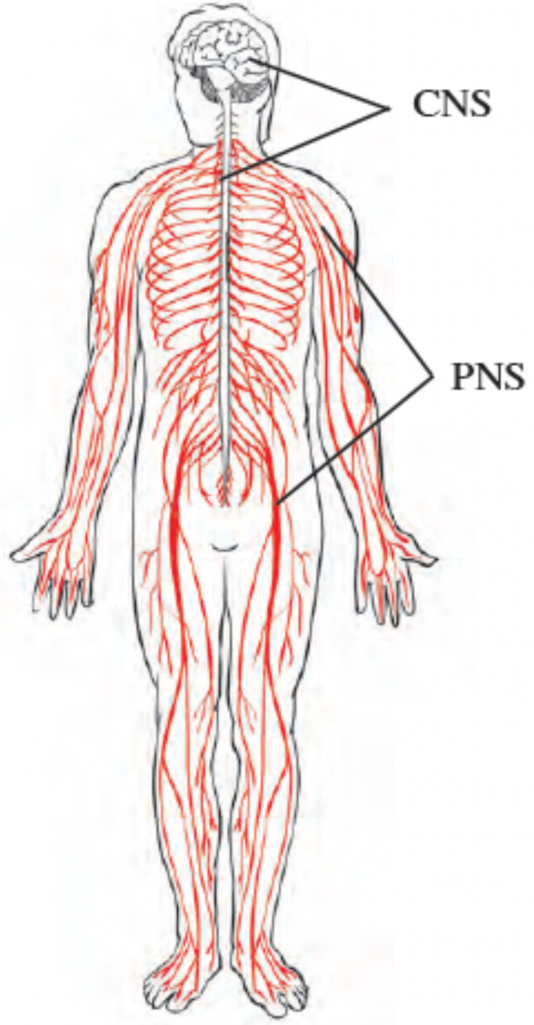
A ) Nervous system
B ) Excretory system C ) Circulatory system D ) Hormonal system
Ans A ) Nervous system
61 ) Which of the inorganic substance is not obtained to plants through roots?
A ) Manganese B ) Phosphorous C ) Nitrogen
D ) Carbon
Ans D ) Carbon
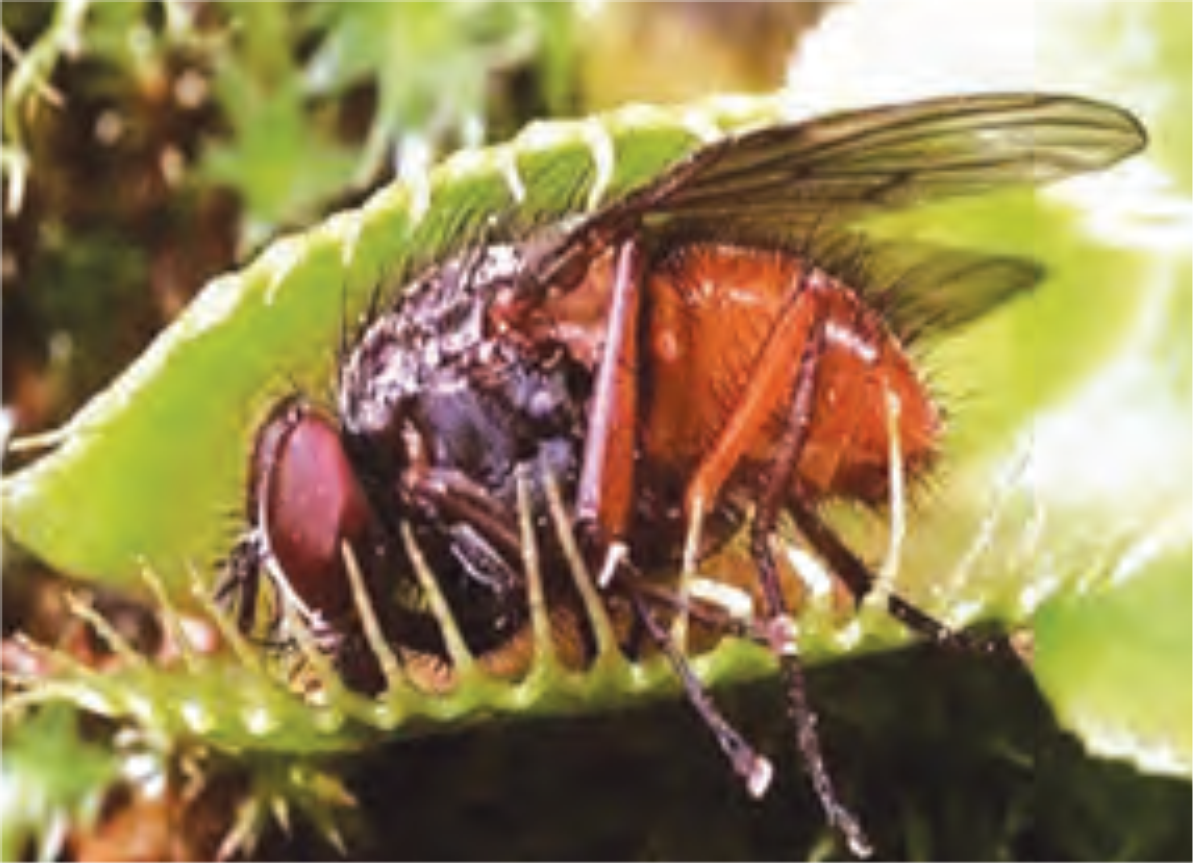 62 ) Which plant is shown in the figure?
62 ) Which plant is shown in the figure?
A ) Tuberose B ) Balsam C ) Mimosa
D ) Venus fly-trap
Ans D ) Venus fly-trap
63 ) The central nervous system consists of the brain and spinal cord.
A ) False
B ) True
Ans B ) True
64 ) When an action or movement is to be brought about in the body, the work of the comes last in the
sequence.
A ) Epidermal tissue
B ) Sensor cells
C ) Glands
D ) Muscular tissue
Ans D ) Muscular tissue
65 ) Movement shown by plants in response to specific chemicals is called ‘. ’.
A ) Phototropic movement B ) Chemotropic movement C ) Tropism
D ) Growth relevant movements
Ans B ) Chemotropic movement
66 ) A minute space, called the is present between two adjacent neurons.
A ) Dendrites B ) Neurons C ) Synapse D ) Axons
Ans C ) Synapse
67 ) Rubber tree : latex of rubber :: Amorphophallus : ?
A ) Gums
B ) Spicules C ) Raphides D ) Resin
Ans C ) Raphides
68) Humans can respond to changes in their surroundings due to nervous control.
A ) True
B ) False
Ans A ) True
69 ) Membrane of Bowman’s capsule is
A ) Impermeable
B ) Semipermeable
C ) Completely permeable
D ) Non-permeable
Ans B ) Semipermeable
70 ) Urine is formed by the by separating the waste and unwanted excess substances from the blood.
A ) Urethra B ) Bladder C ) Ureters D ) Kidneys
Ans D ) Kidneys
71 ) Pick the odd option out.
A ) Urea
B ) Uric acid C ) Ammonia D ) Sugar
Ans D ) Sugar
72 ) Co-ordination in plants is absent.
A ) False
B ) True
Ans A ) False
73 ) Which hormone produced in the apical part of the shoot helps in enlargement of cells?
A ) Auxin
B ) Chemoxin
C ) Cytokinin
D ) Gibberellins
Ans A ) Auxin
74 ) The largest cells in the human body are
A ) Synaptic cells B ) Axonal cells C ) Dendrites
D ) Nerve cells
Ans D ) Nerve cells
75 ) Plants give out water in the form of vapour through the on their leaves.
A ) Veins
B ) Spots
C ) Stomata
D ) Tips
Ans C ) Stomata
76 ) …………… are present on the leaves of the insectivorous plant Drosera.
A ) Fly-traps B ) Mimosas C ) Tendrils D ) Fibrils
Ans D ) Fibrils
- 77) Most of the waste substances of plants are stored in of leaf-cells.
A ) Cytoplasm B ) Vacuoles C ) Lysosomes D ) Nucleus
Ans B ) Vacuoles
- 78) Pick the odd man out with respect to the process of a particular system.
A ) Stimuli
B ) Dialysis
C ) Water-level
D ) Enzyme level
Ans B ) Dialysis
79 )
 The figure shows
The figure shows
A ) Neuron
B ) Glomerulus
C ) Kidney
D ) Nephron
Ans D ) Nephron
80) Plants need comparitively less energy than animals.
A ) False
B ) True
Ans B ) True
82 Root pressure is most effective in tall trees.
A ) True
B ) False
Ans B ) False
83 ) The network of capillaries in Bowman’s capsule is called as
A ) Nephron
B ) Bowman’s capsule
C ) Glomerulus
D ) Capillaries
Ans C ) Glomerulus
84 ) Removal of wastes from the body of animals is carried out by which of the following?
A ) Circulatory system
B ) Conducting tissues C ) Excretory system D ) Lower system
Ans C ) Excretory system
85 ) Urea is produced by the liver and released into blood.
A ) True
B ) False
Ans A ) True
- 86 ) Two pyramids are present on part of the medulla oblongata.
A ) Hind-most
B ) Upper
C ) Lower
D ) Lowermost
Ans B ) Upper
87 ) Several different organ systems function in organisms.
A ) Multicellular
B ) Unicellular
Ans A ) Multicellular
4) The brain of an adult human weighs about grams.
A ) 1200-1300
B ) 1600-1700
C ) 1300-1400
D ) 1400-1600
Ans C ) 1300-1400
- 88) Tendrils are generally present in
A ) Herbs B ) Bushes C ) Shrubs
D ) Climbers
Ans D ) Climbers
- 89) Nerves originating from the spinal cord are called nerves.
A ) Peripheral
B ) Neural C ) Cranial D ) Spinal
Ans D ) Spinal
- 70) Systematic regulation of different processes can be called …………… and bringing about the different processes in the proper sequence can be called …………….
A ) Co-ordination, regulation
B ) Co-ordination, control C ) Control, co-ordination D ) Regulator, control
Ans C ) Control, co-ordination
- 71) Spinal cord is slightly thick but gradually tapers towards the end.
A ) False
B ) True
Ans B ) True
72 ) Muscle cells have the ability to change their shape due to a special type of …………….
A ) Carbohydrate B ) Saturated fat C ) Sugar
D ) Protein
Ans D ) Protein
73 ) Hormones are directly released into the ……………
A ) Cells B ) Ducts C ) Blood D ) Lungs
Ans C ) Blood
74) Accumulation excess of toxic substances in the body can lead to death.
A ) False
B ) True
Ans B ) True
- ) Which of the following is the energy producing process?
A ) Circulation B ) Egestion C ) Excretion D ) Digestion
Ans D ) Digestion
- ) The of kidneys can be adversely affected by injury, infection or decreased blood supply.
A ) Urine
B ) Toxicity C ) Efficiency D ) Blood
Ans C ) Efficiency
 ) The figure shows movement in plant in terms of
) The figure shows movement in plant in terms of
A ) Chemotropic response B ) Gravitropic response C ) Thigmotropic response D ) Phototropic response
Ans D ) Phototropic response
- ) Some specific movements of the plants do not lead to the plant’s growth. Such movements are called ‘. ’.
A ) Reflex response movements B ) Growth-regarding movements C ) Growth-relevant movements D ) Growth-irrelevant movements
Ans D ) Growth-irrelevant movements
- ) Water is released into the atmosphere by leaves through which process?
A ) Transpiration B ) Evaporation C ) Transportion D ) Root pressure
Ans A ) Transpiration
- ) Digestion : Digestive system :: Respiration : ?
A ) Inhalation and exhalation
B ) Respiratory circulation
C ) Respiratory system
D ) Circulatory system
Ans C ) Respiratory system
- ) Nerve cells and neuroglial cells together form which structure?
A ) Myelin sheath
B ) Nerves
C ) Synaptic vesicles
D ) Schwann’s cell
Ans B ) Nerves
- ) Water and minerals enter the cells on the root surface due to …………….
A ) Cell intake properties.
B ) Differences in concentration.
C ) Diffusion of gases
D ) Absorbtion by the cell wall.
Ans B ) Differences in concentration.
- ) The ventricles, central canal and spaces between the meninges are filled with fluid.
A ) Cerebro-spinal
B ) Cerebrumal
C ) Cranial
D ) Spinocular
Ans A ) Cerebro-spinal
- ) Source of light : Phototrophic :: Water : ?
A ) Growth relevant movement
B ) Chemotropic movement C ) Gravitrophic movement D ) Hydrotrophic movement
Ans D ) Hydrotrophic movement
- ) is the nearest and richest source of nutrients for almost all plants.
A ) Water
B ) Air
C ) Soil
D ) Microbes
Ans C ) Soil
- ) Excretion : Urine formation :: Co-ordination : ?
A ) Homeostasis
B ) Oxygenation
C ) Absorption of water
D ) Tissue formation
Ans A ) Homeostasis
- ) animals like the amoeba do not have a nervous system which produces such impulses and
responses.
A ) Multicellular B ) Arthropoda C ) Unicellular D ) Fungal
Ans C ) Unicellular
- ) Transportation in Day time : Transpiration pull :: Transportation in Night time : ?
A ) Stomata
B ) Transportation pull
C ) Evaporation
D ) Root pressure
Ans D ) Root pressure
- ) The right kidney is in a slightly lower position than the left.
A ) True, this makes excretion effective.
B ) False, the left kidney is placed lower than right kidney.
C ) True, this is due to position of liver.
D ) False, both kidneys are placed in same both positions.
Ans C ) True, this is due to position of liver.
- ) By the process of ……………, a substance either synthesised or absorbed in one part of the body reaches another.
A ) Transpiration
B ) Absorption
C ) Synthesis
D ) Transportation
Ans D ) Transportation
- ) Energy generated from food is in the form of –
A ) TTP
B ) ATP C ) CTP D ) TAP
Ans B ) ATP
- ) The functional unit of the kidney that performs the basic function of filtration is called a ……………
A ) Bowman’s capsule
B ) Glomerulus
C ) Kidney
D ) Nephron
Ans D ) Nephron
- ) The growth of the pollen tube towards the ovule is an example of
A ) Phototropic movement
B ) Tropism
C ) Chemotropic movement
D ) Growth relevant movements
Ans C ) Chemotropic movement
- ) is also called as touch-me-not plant as it is sensitive to touch.
A ) Mimosa
B ) Balsam
C ) Tuberose
D ) Venus fly-trap
Ans A ) Mimosa
- ) In plants, movements are mainly in the form of given to the stimuli.
A ) Reflexes
B ) Moving
C ) Responses
D ) Action
Ans C ) Responses
- ) Translocation of materials requires ……………
A ) Nitrogen B ) Minerals C ) Water
D ) Energy
Ans D ) Energy
- ) Hormones are secreted by endocrine glands.
A ) True
B ) False
Ans A ) True
- ) Pick the odd option out.
A ) Myelin sheaths
B ) Dendrites
C ) Axons
D ) Kidneys
Ans D ) Kidneys
- ) The urinary bladder is muscular and it is under the control of nerves.
A ) True
B ) False
Ans A ) True
- ) Which of the following is true?
A ) The process of excretion in unicellular organisms is complex.
During flowering season, the sugar stored in roots or stem is transported towards the
B ) floral buds to make them open and blossom.
Ans
C ) Retention of unwanted substances in the body is useful.
D ) Excess food is stored in the form of amino acids.
During flowering season, the sugar stored in roots or stem is transported towards the
B ) floral buds to make them open and blossom.
- ) The action of hormones is very slow but long lasting.
A ) False
B ) True
Ans B ) True
- ) Impulses are conducted in the body and these impulses are finally conveyed by nerve cells to muscle cells or glands.
A ) True
B ) False
Ans A ) True
- ) The root system of plants responds to stimuli like gravitation and water.
A ) False
B ) True
Ans B ) True
- ) Plants use impulses for transfer of information from one place to another.
A ) Biological
B ) Electro-chemical
C ) Physical
D ) Hormonal
Ans B ) Electro-chemical
- ) Roots are responsible for anchorage.
A ) True
B ) False
Ans A ) True
- ) The spinal cord is protected by the …………….
A ) Meninges
B ) Cranium
C ) Vertebral column
D ) Central canal
Ans C ) Vertebral column
- ) Which part of the plant is responsible for intake of major nutrients?
A ) Flowers
B ) Stem C ) Leaves D ) Roots
Ans D ) Roots
- ) It is not important that hormones are secreted only in the required quantity and there is a special mechanism which controls the quantity and timing of hormone secretion.
A ) False
B ) True
Ans A ) False
- ) In Balsam, the ripened fruit dehisces (bursts-open) at the right time to disperse the seeds.
A ) True
B ) False
Ans A ) True

